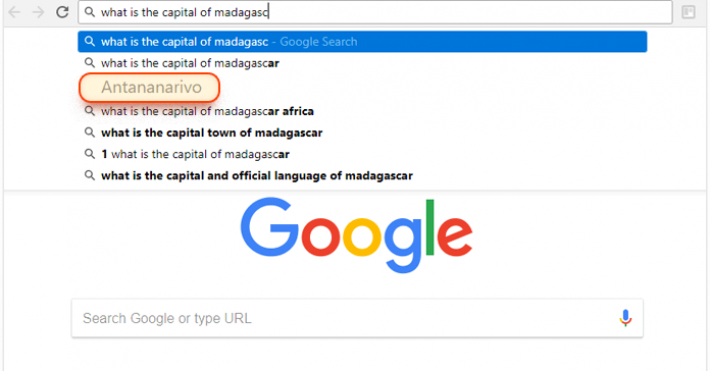Semantic is the philosophical study of meaning. Semantic search is associated with finding out what your user means when it comes to your platform, with the ultimate goal of finalizing some transactions. Considering semantics as the essential meaning of something, semantic search implies the study of words and their logic. Semantic search aims to improve the search’s accuracy by comprehending the contextual meaning of what the searcher intends to find out.
Data Structuring
Through natural language algorithms and synonyms of concept matching, semantic search provides more interactive results of a search by changing the unstructured and structured data into the responsive and intuitive database. By doing a semantic search, a better understanding could be made of the intent of the searcher. As a result, personalized results could be extracted and delivered. The Knowledge Graph of Google is a paradigm of proficient semantic search.
Semantic Search by Engines
An obvious question arises as to why engines conduct a semantic search. The reason is that Google wants wider connection, more data collection, a deeper understanding of the users’ intent, less spam, and increased natural language search. Once these objectives are understood, the users get the maximum possible search experience. The world’s data is doubled every two years, which is giving in to the emergence of big data. The process of structuring, organizing, and semantically connecting data is an essential role of search engines.
War Against Spam
Google adopts Latent Dirichlet Allocation (LDA) and Latent Semantic Allocation (LDA) to flag the effort to spam through keyword stuffing or article spinning. The Term Frequency determines the quality of the article because the search engines, with a good idea of statistical interpretation of the words, can make the semantic correlations that could arrest spam.

Various entities like people, things, places, ideas, or concepts are connected to create deeper insight into the search responses. Google’s Knowledge Graph is a major breakthrough in this regard. Google and other engines recognize different entities and formulate answers to the questions, and these are then algorithmically comprehended and displayed.
SEO Implications
As an SEO expert, if you understand semantic search, you will benefit immensely from the gains from search. Your SEO strategy must be outlined effectively for integrating semantic search signals. If, besides knowing all the topics, we know the keywords linked with a particular entity, we can achieve optimal rankings for our clients through our content. Although we are not aware of all the entities, you can enhance your semantic search strategy by making some innovative trials and errors.
SEO Strategies
Semantic SEO
Semantic SEO means optimizing your content by putting the focus on the meaning in the query. It is the context and not one specific question that the visitor is asking. Semantic SEO proactively addresses extra questions your visitor might possess. Google appreciates content filled with natural and relevant languages. Authoritative thinking is essential. Google directs users to go to web pages from where they can get valuable information.
AI and Algorithm
As envisioned by Google, Artificial Intelligence is the next evolution of search technology after the Google Assistant. Google needs an expert friend, a trustworthy companion, and a reference point for all its conversations. Look into the following for having a strong search strategy. Your approach should improve your users’ experience with your content and reach your target users better at every search touch-point.
Elements of Artificial Intelligence are already in use in Chatbots, FaceBook, Tesla elements cars, Netflix, Siri & Alexa. Words and phrases connected with Semantic SEO are associated with the AI movement. It depends on the algorithm of topic modeling.
Search Process
Besides predicting user intent, the search process provides an interactive experience. The NLP process makes the computers understand and be well conversant with the human language. Google uses it for helping the algorithm explore the best possible queries. Hummingbird algorithm asks for SEO strategies that are driven semantically. It recognizes the interconnection of keywords. The ranking of a website is done based on relevance associated with search queries. New language-driven SEO increases rankings and consequently boosts your sales.
Keyword Search vs. Semantic Search
In the landscape of new semantic search, think of your keywords differently. Either incorporate the LSI keywords or Index-based words of Latent Semantic. Of the three levels in your content, each performs a specific task. They work in targeting keyword searches helping users to find what they want. At the same time, they give content answering the questions of the users.
• L1- Core words that are similar to originally targeted keywords
• L2- Theme words, not similar but are related to concepts
• L3- Stem Words answer questions of users after they have located your page
Semantic Content Structure
The semantic content structure should be such as to bring down the traditional friction between the author of the content and the consumers.
Structure makes an object-oriented approach to shape content.
- The organization of the content object needs to be reusable instead of being unstructured blobs.
- The objects are made up of containers that could be manipulated, annotated, transformed, reused, and can be managed centrally. You can point them from any point,
Content semantics is contextualizing the context structures
- It refers to association, enteritis, and relationship for a particular piece of content within the metadata.
- It is how machines can understand connections of content and relationships.
Reasons for Contents to be Intelligent
We use the content to acquire, manage, and leverage people to be engaged and informed. Therefore, the content must be able to move and flow. Intelligent content is contextualized and structured such that it can
- Flow efficiently and effectively between people, applications, and machines
- Deliver optimized experience to customers at scale
- Obtain maximum ROI in getting and managing it.
- Content intelligence evolves constantly depending on consumer demand. We need to integrate our content with other divisions.
For creating intelligent content, we combine semantic with structured content to become predictable and make the machine work with it consistently. It also optimizes the human value of the content with the addition of relevant context.



